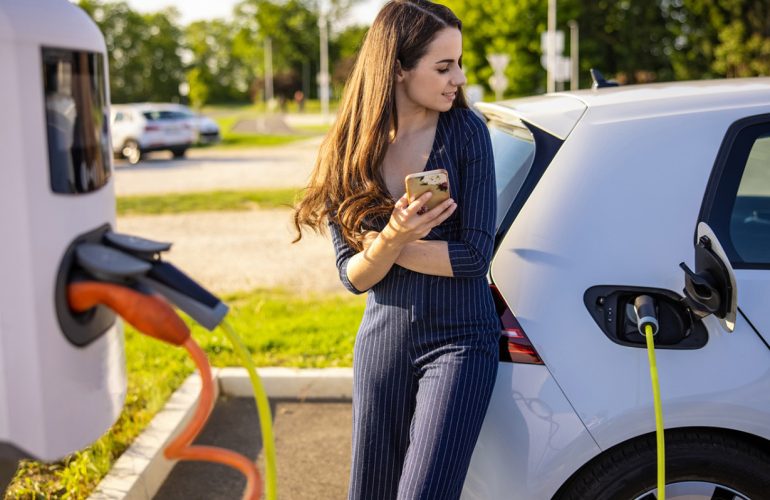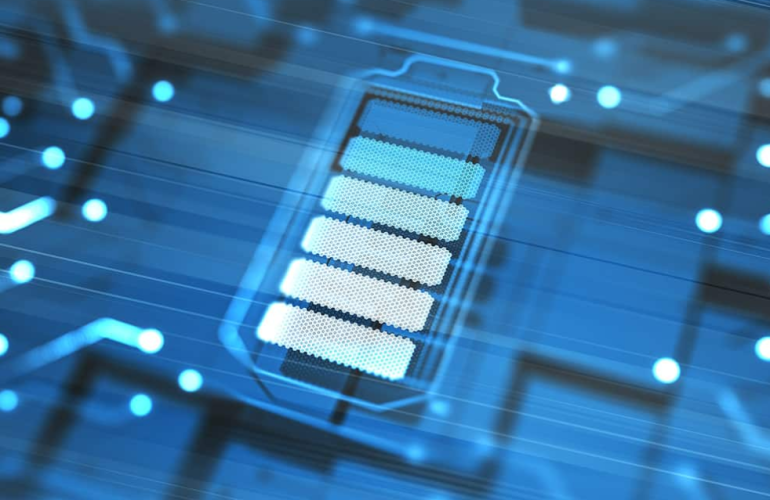In the modern fishing boat, regardless of whether it is piloted by a casual weekend angler or a seasoned tournament professional, electrical power from one or more on-board batteries is relied upon for nearly all essential features and functions.
Deep cycle batteries are distinct power sources designed specifically for marine applications. Their unique feature is the ability to be discharged almost completely and then recharged back to a like-new state. Charging a battery involves intricate science, and understanding how to safely perform this task is of utmost importance. By learning some expert tips, you can prolong the lifespan of your battery pack and get the most out of its performance.
5 Steps for Charging a Deep Cycle Marine Battery
Most boats are equipped with deep-cycle batteries designed to provide sustained power for long periods. And unlike other battery types, you can drain and recharge a deep-cycle marine battery time and time again.
Want to give it a go? In this post, we’ll explain how to charge a boat battery in these five simple steps:
1. Choose the Right Charger
Because there’s a wide variety of boat batteries on the market, you’ll find an abundance of battery chargers to choose from. And as you can probably imagine, the best charger for your deep-cycle marine battery will be designed specifically for it. We recommend matching your charger to your boat battery’s chemistry and voltage, and if you have more than one battery on board, make sure the charger can accommodate both.
All boat battery charges fall into one of two categories: onboard and portable.
As their name suggests, portable chargers are known for their portability and can be used anytime and anywhere. Additionally, they’re less expensive. On the other hand, onboard chargers are already connected to the battery system, which makes them easier to use. All you have to do is hook them up to a standard 120-volt outlet, and they’ll charge relatively quickly.
2. Select the Right Time
Did you know that charging a boat battery requires certain conditions? The optimal charging temperature for ionic lithium batteries is above freezing. However, you can get away with charging them at temperatures of -4°F to -131°F without causing damage.
3. Clean the Battery Terminals
This step is pretty self-explanatory. Grimy battery terminals disrupt the charging process (making it longer and less efficient). Therefore, you’ll want to clean them before you begin!
4. Connect the Battery Charger
The next step to charging a boat battery is connecting the charger. To do so:
- Connect the red (positive) cable to the red terminal.
- Connect the black (negative) cable to the black terminal.
- Plug in the charger and turn it on.
If you’re using a smart charger, you can set it up and forget it. These chargers are designed to stop charging on their own. In addition, most ionic lithium chargers have Bluetooth capabilities, so monitoring their progress is easy. However, if you’re using a lead-acid charger, you’ll have to set a timer and manually disconnect it once it’s finished.
5. Disconnect the Charger
Once the battery is fully charged, you can disconnect the charger by unplugging it. Then, remove the black cable from its terminal, followed by the red one.
How to Install a Deep Cycle Battery?
In case that you are looking forward to upgrading to a deep cycle battery for your vehicle, then you should first learn more about its installation instead of maintenance details. Thankfully, installing a deep cycle battery is quite easy and very similar to most other battery types. You can simply follow the given steps for installing a deep cycle battery in your vehicle
- First, make sure that all of the electronics as well as the ignition of your vehicle is turned off before you remove your existing battery.
- Then, check the positive and negative terminals of your existing battery and ensure that they are the same as the upgraded deep cycle battery you are installing.
- Now, use a spanner to first loosen the negative terminal and then the positive terminal while pushing the terminals away from the battery.
- At last, remove the hold-down clamp of your battery to safely remove the battery using the inbuilt handle.
Once you have removed the battery from your vehicle, you can proceed ahead to install the new deep cycle battery as shown here:
- Before installing the battery, make sure the battery tray is properly cleaned with water and baking soda before installing the new battery.
- Now, place your new deep cycle battery in the battery tray while making sure that it fits properly.
- Then, install the hold-down clamp for your battery in a way that the battery is properly secured.
- At last, connect the positive terminal and then the negative terminal while ensuring that they are pushed all the way down. You can also consider installing the rubber caps for the battery terminals if your deep cycle battery comes included with the same.
How to Charge a Deep Cycle Battery?
After you have successfully installed a deep cycle battery in your vehicle, you can go ahead and start using it for all its various benefits. Although, if you are using a completely new deep cycle battery, then it is highly likely that it did not come charged out of the box.
In other words, before you can use your deep cycle battery, you will have to charge it. For the same, you need to keep a few things in mind before charging a deep cycle battery which includes the following:
- To charge a deep cycle battery, you will have to use a multi-stage battery charger that is compatible with your deep cycle battery. These battery chargers charge your batteries in a total of 3 stages which include constant current, constant voltage, and float charge.
- To choose the right multi-stage battery charger for your deep cycle battery, you will have to first ensure that the voltage of your charger matches the voltage of your battery which is generally either 6 volt or 12 volt.
- Now, divide the Ah rating of your battery by 10 to calculate its ideal charger amp rating. While keeping a battery charger for your deep cycle battery, you have to make sure that its ideal charger amp rating is as close as possible to that of your battery.
- Once you have decided upon the right multi-stage battery charger for your deep cycle battery, you have to ensure that you are using it safely as well. And it goes without saying that, you have to keep your battery and charger away from all flames and sparks.
- You should ensure that the charger is turned off whenever you are connecting or disconnecting batteries to it.
- When you are charging batteries, both the batteries and the charger need to be properly vented to prevent overheating.
Why Do You Need To Charge Your Battery Correctly?
Why does it matter how you charge your deep cycle battery? Well, charging your battery the right way can have an effect on how well and how long it lasts.
For lead acid batteries, overcharging can ruin them. Leaving them at a partial state of charge can do a real number on them too.
Luckily, those no-nos don’t exist for lithium marine batteries. You can use them past 50% battery capacity without damaging them. And you don’t have to charge them right away after using up your charge. This is super convenient when coming home from a fun but exhausting day out on the lake.
Cycles of Battery Charging
During its lifetime, you can recharge a deep cycle battery to full capacity many times. You can drain it down a long way and then recharge it to full capacity many times. You’d typically start with the battery at 100% capacity, then drain it down to between 20% and 50% of its capacity. And then recharge back up to 100%. No problem.
The normal depth of discharge of your batteries will also affect their lifespan. To make a battery last longer, you need to push it to 50% of its capacity, and often. Repeated shallow discharge (5-10%) of a deep cycle battery reduces its lifespan.
A good deep cycle battery can be drained and then recharged to full capacity. You don’t have to be very conservative with your batteries when you’re on the water.
Choose the right charger voltage/amps.
Once you know what type of charger you need, you need to pick one with the right amount of voltage and amps. For example, a 12V charger is compatible with a 12V battery. Within the 12V Lithium Battery category, you can choose from different charge currents (i.e. 4A, 10A, 20A).
To choose the right amount of amps, check the amp hour (Ah) rating of your battery. Make sure the amp rating isn’t higher than the amp hour rating of your battery. Using a charger with an amp rating that is too high can damage your battery.
Charge in the right conditions.
Did you know that high and low temperatures can affect your marine battery? Lithium batteries are the most resilient of the bunch. You can charge them at temperatures between -4°F – 131°F (0°C – 55°C) with no risk of damage. But the optimum charging temperature for Ionic Lithium Batteries is above freezing. If you need to charge your battery below freezing temps, no need to fret. Our 12V 300Ah battery is a beast of a battery. It comes equipped with a heater, so no more worries about freezing temperatures!
Deep Cycle Battery Maintenance
Once you have installed your deep cycle battery in your vehicle and properly charged it, you would want it to stay functional for as long as possible. In other words, it is highly important to properly maintain your deep cycle battery for long-term usage. For the same, you can keep the following things in mind:
- Whenever you are charging your deep cycle battery, make sure to set the charging voltage properly for proper long-term usage.
- If you are using lead-acid batteries, then you need to refill them every 2-4 weeks with distilled water for optimum performance.
- You should regularly clean the terminal connections of your deep cycle battery to prevent any corrosion or other issues.
Battery Health and Safety
While we have already discussed some of the crucial deep cycle battery maintenance tips up above, you also need to ensure complete safe usage at all times. Therefore, you should also keep the following deep cycle battery health and safety tops in your mind at all times:
Battery Acid
If you are opening up a battery for maintenance, then you have to be extra careful with the battery acid present inside. If it comes in contact with your skin, it can cause severe burns and other problems.
First Aid
In case of any form of accident, you should flush your eyes continuously while holding your eyelids apart. You need to continue this for 15 minutes to prevent any eye damage. Similarly, you should also wash your skin with running water in case of an accident.
Acid Spill Response
If battery acid has been spilled due to some accident, you need to neutralize with soda ash or some different alkali. Once neutralized, everything should be properly disposed of as chemical waste.
Exploding Battery
In some cases, a deep cycle battery may generate explosive gases over time as it gets used. And if there are any kind of flames or spark around the battery, it may cause an explosion due to these batteries.
Eye Protection
Whenever you are changing batteries, installing batteries, or doing anything else, you have to be sure that you are wearing proper eye protection at all times.
Avoiding Extreme Circumstances
As you get set to charge your deep-cycle battery, remember that extreme temperatures aren’t ideal for the components. Keep the battery and charger away from extreme heat or cold. The charging process is dependent upon a certain range of temperatures. Room temperature is optimal. The storing process can operate without any strain. You may notice charging times changing when it’s too hot or cold. The battery is also permanently affected with a shorter charge time than before.
Frequently Asked Questions
How Long Does It Take to Charge a Boat Battery?
If you want your boat battery to charge as fast as possible, use a charger designed specifically for it. From there, expect a marine battery to charge from 0% to 80% for about four to six hours.
Can You Charge a Boat Battery on the Water?
You sure can! Portable charges are ideal for charging your boat’s battery while it’s afloat.
How Long Do Boat Batteries Hold Their Charge?
How long your battery holds its charge depends on various factors, including the make/model of the battery and the type of battery. As you can guess, the more frequently you use the battery, the more you need to charge it. But in general, expect your marine battery to hold its charge for about six months.
What Are the Maintenance Costs?
How much a marine battery charger costs depends on its size and power requirements. However, average costs range from $100 to $500. Boat batteries last three to four years (although they can last up to six years under the right conditions). Then, the replacement battery cost will fall between $100 and $500.
Do you need a special charger for a deep cycle marine battery?
Marine lithium batteries come in 4 different chemistries: flooded, AGM (Absorbed Glass Mat), gel and lithium. If your starting and deep cycle batteries have different chemistries, you will need to pick up a different charger for each battery, or find a charger with a charging setting for both chemistry types.
What kind of battery charger do I need for a deep cycle battery?
Your deep cycle battery charger should match your battery’s voltage. This part’s easy — but extremely important. Choose a battery charger that matches the voltage rating of your battery. For example, if your battery is rated 12 volts, you need a 12V battery charger.




